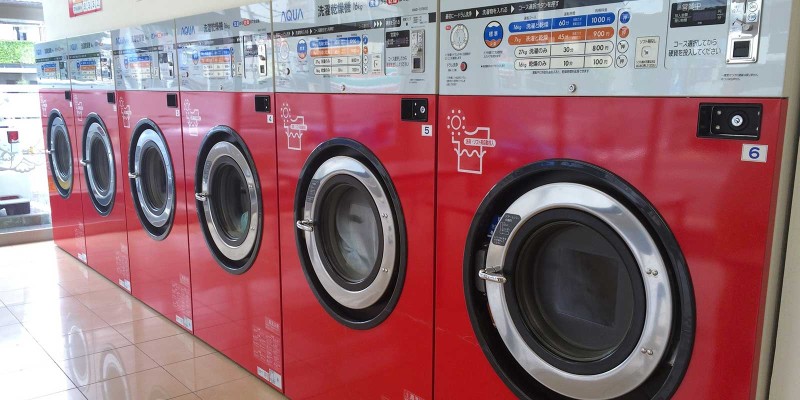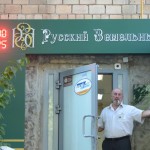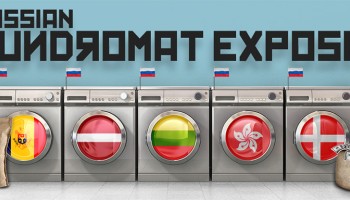The Russian Laundromat was an efficient financial crime vehicle designed to supply a legal cover for the movement of giant sums of money out of Russia.
This was achieved with the creation of fake debts between phony companies controlled by a Russian company with Moldovan connections. Moldovan judges in on the scheme ordered Russian parent companies to pay off the phony debts, thus allowing them to move real cash to Moldova and then on into Europe.
The goal was simple: To go from money in Russian accounts to “clean” money with a court-ordered explanation for how it came to be sitting in a European Union bank, cleared to be spent or moved anywhere.
Reporters for OCCRP have obtained banking statements from 112 accounts at bogus companies that comprised the Laundromat and have asked financial investigators to analyze typical crimes in these transactions.
Experts Review the Data
OCCRP was able to identify a number of “beneficiaries” -- the people who actually ended up with the money.
Laundering systems use rapid, electronic transfers that repeatedly move money from bank accounts held by a group of bogus companies to other bogus companies in a twisted chain of transactions that are hard to track and thereby ultimately obscure the sources and beneficiaries. Many of the companies involved with the Laundromat are registered in offshore tax havens where owners need not even be identified. Others have proxies that hide the real owners.
The companies largely worked like financial pumps, moving identical sums in and out of accounts in different jurisdictions. At the end of all this pumping, money landed in accounts in reputable banks in places like Switzerland and into the accounts controlled by the real owners.
The beneficiaries are Russian businessmen who own a number of companies involved in construction, engineering, information technology and banking. All held hundreds of millions of US dollars in Russian state contracts either with the state directly, or with state-owned entities.
Financial investigators who examined the Laundromat transactions at OCCRP’s request included a former officer from the banking unit of the Federal Security Service of the Russian Federation (FSB) and an investigator from the Ministry of Interior. They said that the money that passed through the Laundromat might have been inflated profits from state contracts.
“Russian procurement is based on inflated prices,” said the former FSB officer. “Since the system is corrupt, only a small fraction of the official price is spent on real goods or services for the state. The [excess] is siphoned to bogus companies in Russia and then wired to offshores through different platforms, like the Laundromat. This money is later divided among officials and suppliers.”
“Gray import”
Dmitry Gorovtsov, a former member of the Russian State Duma and secretary of the working group which analyzed the collection of customs duties in 2013, told reporters at Novaya Gazeta that much of the stolen US$20.8 billion could be related to “gray import” schemes.
The working group, formed by Prime Minister Dmitry Medvedev and President Vladimir Putin, concluded that in 2013 alone the Russian budget lost around US$ 40 billion in customs duties from such schemes.
“These losses come from ‘gray import’ schemes, when goods are imported in Russia through a chain of bogus companies,” he said. “These companies don’t report their operations and carry out no genuine business.”
One Laundromat case seems to support this thesis. In 2013 a businessman from Moscow wanted to import children’s clothes from a United Kingdom (UK) firm called Hippychick. The clothes traveled directly from the UK to Russia. But the paper trail was much more complicated.
Officially, the clothes were paid for by a bogus company from Cyprus called Kedassia Ltd., which had an account in Latvia’s Trasta Komercbanka. Kedassia’s money came from still other companies from Belize and Cyprus, which also had accounts in Trasta Komercbanka.
Reporters for OCCRP checked official Russian records for 2013 to see who had imported Hippychick clothes to Russia. It appeared that all imports were executed through bogus companies, both from the UK and Russia, and that no customs duties were paid in these deals.
In 2013 three UK companies exported Hippychick clothes to Russia: Ventro Trading LLP, Pulman Trading LLP, and Mount Industries LLP. All three are dissolved today. The deals were not reported to UK regulators and no sales to Russia appeared in the companies’ financial reports.
The Russian picture was no better. A St. Petersburg’s company called Erika that imported Hippychick wares was sued by the customs services in 2016 for failing to declare part of their imported goods.
Court records indicate this was not Erika’s only customs violation. The court couldn’t locate the company at its stated address and ruled in favor of the customs service. According to the official database of court enforcements, Erika has not yet paid its fines, and, since it was dissolved in 2017, it likely won’t.
Pandora in St. Petersburg also imported Hippychick clothes in 2013. In 2015 when it went bankrupt, its only creditor was the Russian Tax Service, which tried to recover unpaid customs duties and fines. Nobody could find Pandora; the firm had no assets or cash in bank accounts. The state never collected the debt.
Gorovtsov calls this a typical gray import scheme. “The whole customs system is corrupt. If a normal businessman wants to import any goods in Russia, he will get stuck in bureaucracy. That is why most export-import deals are done through freight forwarders, who are usually controlled by customs service officials.” And money in this corrupt system, he said, “goes via money-laundering platforms.”
Tax evasion
The former FSB officer thinks part of the Laundromat’s money came from tax evasion. The most popular scheme for evading profit tax in Russia is to sign fake contracts with bogus companies to fraudulently show increased expenses and less profit.
“You wire money to the money launderers and take cash from them,” he said. “It allows businessmen to pay salaries to their employees in envelopes and reduce other hidden taxes, like payments to the Pension Fund. And money launderers wire money offshore, where they can use it for various purposes; for instance, for buying goods and importing them to Russia through ‘gray import’ schemes.”
Bank thefts
It’s likely some of the money moved through the Russian Laundromat was stolen from depositors at Bank Zapadny, a bank that was part of the system. The bank belonged to Alexander Grigoriev, who also owned the Russian Land Bank (RZB) which moved about $5 billion out of Russia through the Laundromat.
According to the Deposit Insurance Agency, a state body which seeks to recover the assets of failed banks to repay depositors, in 2014 the Bank of Russia sent a letter to the Ministry of Interior asking police to start a criminal case on fraud, premeditated bankruptcy and other crimes committed at Bank Zapadny.
According to RBC, a Russian business daily, Bank Zapadny owed around $240 million more than its assets were worth.
The Bank of Russia believes that Bank Zapadny’s assets were stolen before its 2014 bankruptcy. The Deposit Insurance Agency announced on its site that the Ministry of Interior is investigating a number of criminal cases involving thefts from the bank covered by fake loans. A ministry investigator who did not want to be named told OCCRP that some assets of Zapadny were stolen through the same offshore bogus companies involved in the Laundromat.






